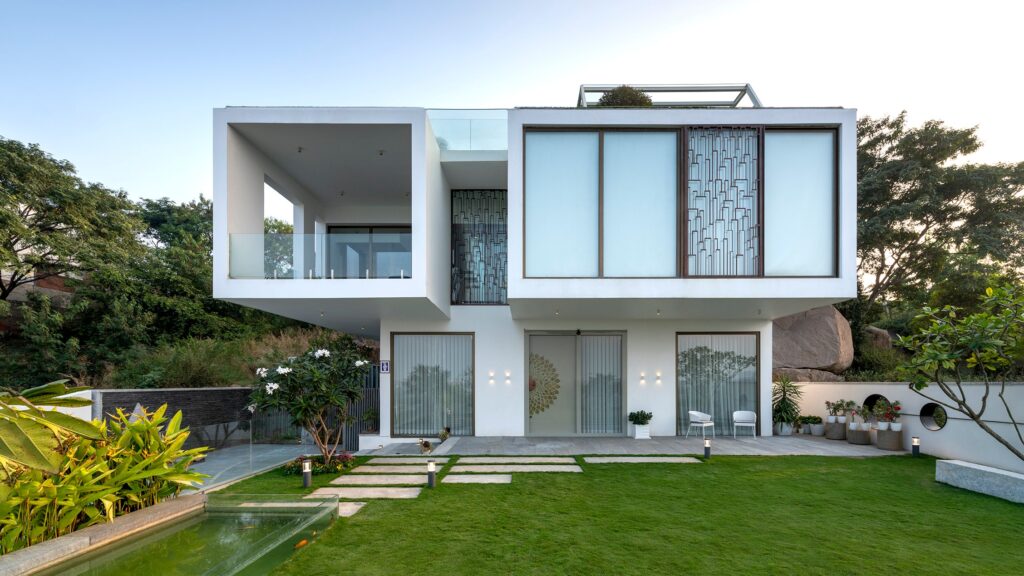
Designing for privacy and exclusivity in architecture involves a delicate balance between communal and personal spaces through thoughtful room layouts, partitions, aesthetics, and lighting. This creates tranquil retreats that offer solitude without sacrificing social interaction. Communal areas like living rooms and kitchens encourage engagement, while bedrooms prioritize minimal distractions and individualization. Seamless integration fosters homes valuing social collaboration and personal reflection.
Art and Cultural Influence in High-End Design

Luxury design fuses art and tradition, with designers collaborating with artists to create functional masterpieces. Luxury pieces draw inspiration from various art movements, reflecting both artistic expression and personal style.
Culture profoundly influences luxury design, merging local craftsmanship with global aesthetics. Elements like Scandinavian simplicity or African eclecticism add authenticity to high-end designs, serving as a platform for cultural dialogue in a globalized world.
Modern architectural luxury goes beyond opulence, emphasizing detail, personalization, sustainability, and technology for functional, visually pleasing spaces. Future luxury architecture will integrate advanced materials, methods, and customization, prioritizing eco-friendly practices. Architects will continue inventing spaces that are aesthetically captivating and ethically responsible, reflecting our desire for inspiring, comfortable living environments.
Luxury in architectural design goes beyond high-end materials and grand structures. It involves aesthetics, functionality, and individual identity, creating spaces prioritizing inhabitant comfort and well-being. This luxury is characterized by exclusivity and attention to detail, aiming to create personal havens that align with residents’ lifestyles.
Luxury in architectural design has progressed over centuries, adapting to changing tastes, technologies, and cultures. It has shifted from pristine palaces to modern high-end homes, showcasing innovative design, sustainability, and smart technology. This transformation reflects broader shifts towards personalization, efficiency, and environmental awareness, highlighting luxury as a dynamic reflection of contemporary design values.
The Shift in Luxury Design Trends

Luxury design has progressed from classic opulence to a contemporary focus on originality and tailored experiences. Traditional elements like ornate decorations have been replaced by sleek lines, minimalistic aesthetics, and innovative materials. Modern luxury prioritizes unique features that resonate with individuality.
Designers, such as those from an architecture firm in Los Angeles, craft personalized experiences by blending technology and creativity, and clients seek adaptable environments that offer both comfort and functionality while maintaining exclusivity. This spans from private home cinemas with bespoke sound systems to bathrooms as spa retreats with smart technology catering to preferences. The result is an intimate and immersive luxury that redefines the overall experience.
Sustainable and Eco-Friendly Practices
The design world embraces eco-consciousness, integrating sustainable materials and green technology for premium aesthetics. Energy-efficient lighting, low-emission appliances, recycled glass, reclaimed wood, and bioplastics are preferred for ethically sound, luxurious spaces. Sustainability adds a unique narrative of environmental stewardship and mindful consumption. Brands shift towards eco-friendly practices, setting new standards for luxury.
Technological Innovation in Architecture

Architecture embraces technology, integrating smart systems for convenience. Smart homes offer smartphone or voice-controlled lighting, heating, security, and appliances. Cutting-edge materials like self-healing concrete and aerogels improve insulation and durability. Kinetic architecture enables buildings to adapt to environmental conditions and user needs, challenging conventions and enhancing resilience and sustainability. Architects leverage technology and materials from architectural cladding companies for eco-friendly designs.
Aesthetic Elements and Craftsmanship
In design, aesthetics and craftsmanship are making a strong comeback, moving away from mass-produced items towards unique, handcrafted creations. This revival highlights the importance of details and personalized touches, emphasizing quality and individuality. Handcrafted items carry the artisan’s dedication, each with a unique story.
Consumers increasingly value the blend of artistry and functionality as they become more aware of the creation process. The surge in customization adds an exclusive dimension, allowing products to align with personal style and express individual identity. Customized, handcrafted goods turn everyday items into luxurious expressions of self, reshaping the luxury market and creative standards.
Embracing Location and Natural Elements

Site-specific design, a trend in architecture and interior design, enhances living spaces by harmonizing them with their surroundings. It transcends traditional construction, considering topography, climate, and natural elements. Architects and designers create homes that seamlessly integrate with the environment, offering both beauty and serenity.
Incorporating landscapes elevates luxury living, connecting residents with nature through expansive windows and complementary materials. The goal is to design spaces that feel like extensions of the natural world, fostering a constant connection to the environment’s beauty and tranquility.
Health and Wellness in Mind
Luxury spaces prioritize well-being, working from opulence to sanctuaries for the mind and body. They enhance mental and physical health, offering fitness centers with cutting-edge equipment for personal or group workouts. Spa and relaxation areas provide serene escapes, promoting relaxation, mindfulness, and rejuvenation. These specialized spaces create harmonious environments that cater to the diverse needs of discerning individuals.
Multifunctional and Flexible Spaces
Modern luxury spaces excel in adaptability, accommodating diverse activities within a single area. Innovative design, smart technology, and versatile furniture optimize square footage while allowing personalization for changing requirements.
Whether converting a home office into a guest room, a kitchen into a social hub, or a living area with hidden storage, these spaces exude sophistication in their adaptability. They maximize real estate utility, especially in urban settings, aligning with progressing lifestyles, making multifunctional spaces key to innovative design.




